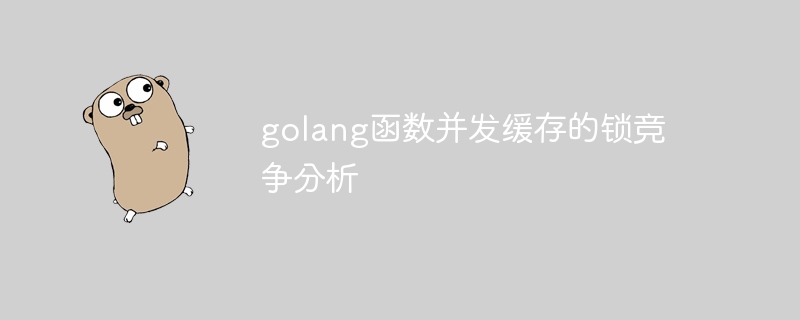golang函數並發快取的鎖定競爭分析
- WBOYWBOYWBOYWBOYWBOYWBOYWBOYWBOYWBOYWBOYWBOYWBOYWB原創
- 2024-05-01 18:21:011164瀏覽
Go 中函數並發快取存在鎖定競爭問題,導致效能下降,甚至程式崩潰。可以使用 pprof 或 go tool trace 分析鎖定競爭。一種解決方法是在快取函數中加鎖,確保一次只有一個 goroutine 存取快取。

Go 中函數並發快取的鎖定競爭分析
問題
在Go 中,我們經常使用函數快取來提高效能。然而,當函數被並發呼叫時,快取的鎖定競爭可能會成為一個問題。
潛在影響
鎖定競爭可能導致效能下降、死鎖,甚至程式崩潰。
實戰案例
考慮以下函數快取範例:
// cache 是一个映射表,key 是函数参数,value 是函数返回值
var cache = make(map[string]interface{})
// getCacheValue 获取缓存值
func getCacheValue(key string) interface{} {
value, ok := cache[key]
if !ok {
value = calculateValue(key)
cache[key] = value
}
return value
}
func calculateValue(key string) interface{} {
// 模拟一个耗时的计算过程
time.Sleep(time.Second)
return key
}
// main 函数并发调用 getCacheValue
func main() {
// 创建多个 goroutine 并发调用 getCacheValue
// 省略并发代码示例
}鎖定競爭如何發生
getCacheValue 函數不會對快取進行加鎖,因此多個goroutine 可以同時存取快取。當並發呼叫在同時嘗試存取快取時,可能會發生鎖定競爭。
分析工具
我們可以使用 pprof 和 go tool trace 等工具來分析鎖定競爭。
pprof
使用pprof 分析鎖定競爭:
- 執行帶有
-mutexprofile標誌的程式:go run -mutexprofile=mutex.prof main.go - 使用
pprof查看鎖定競爭報告:go tool pprof -mutex mutex .prof
go tool trace
#使用go tool trace 分析鎖定競爭:
- #錄製程式執行痕跡:
go tool trace -cpuprofile cpu.prof -mutemuteprofile mutex.prof main.go - 查看鎖定競爭報告:
go tool trace mutex mutex.prof
解決方案
解決快取鎖定競爭的一種方法是在getCacheValue 函數中對快取進行加鎖:
func getCacheValue(key string) interface{} {
lock.Lock()
defer lock.Unlock()
value, ok := cache[key]
if !ok {
value = calculateValue(key)
cache[key] = value
}
return value
}這種方法確保一次只有一個goroutine 可以存取緩存,從而避免鎖定競爭。
以上是golang函數並發快取的鎖定競爭分析的詳細內容。更多資訊請關注PHP中文網其他相關文章!
陳述:
本文內容由網友自願投稿,版權歸原作者所有。本站不承擔相應的法律責任。如發現涉嫌抄襲或侵權的內容,請聯絡admin@php.cn

